A heat exchanger is a mechanism used for transferring heat between two or more liquids. A heat exchanger is used for both heating and cooling. The liquids can be separated by a solid wall to avoid forming mixtures, or they can be directly in contact. Read More…
Enerquip is your trusted shell and tube heat exchanger partner. Our in-house, thermal design engineers and ASME welders and fabricators can design and build custom engineered solutions for your company’s specific needs. Our experience and expertise have earned us a preferred supplier status with leading companies in the pharmaceutical, food and beverage, cannabis, personal care, chemical,...
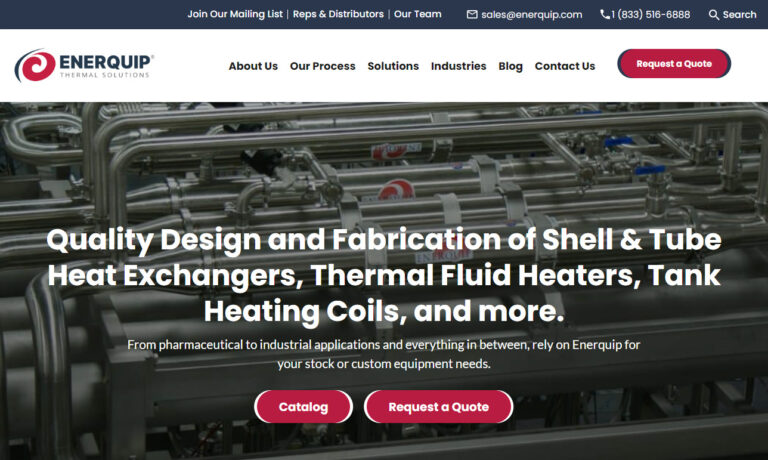
Mason Manufacturing is a custom fabricator of shell and tube heat exchangers, ASME pressure vessels, columns, and tanks. Located in Decatur, Illinois, Mason has over 60 years of experience providing customers with custom fabricated vessels that conform to customer specifications, applicable codes, accepted industry standards and that are consistently shipped on time with competitive pricing....
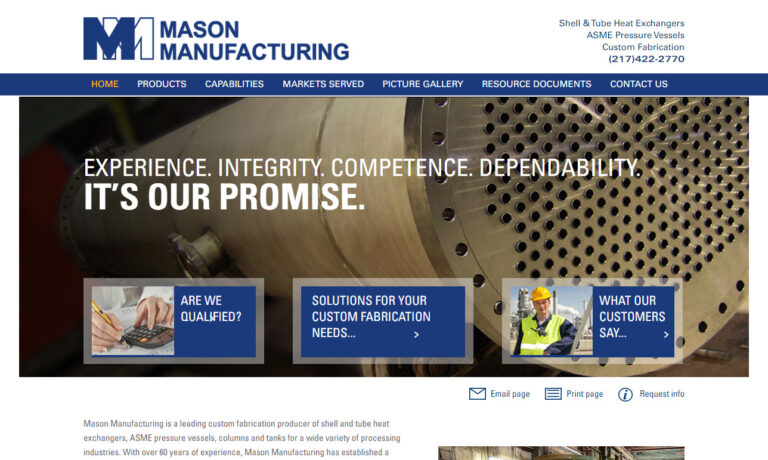
At Tech Fab, we specialize in providing comprehensive solutions for heat exchangers, tailored to meet the diverse needs of our valued clientele. With decades of experience and expertise in the fabrication industry, we have established ourselves as a trusted leader, known for our unwavering commitment to quality, innovation, and customer satisfaction. Our product offerings encompass a wide range...
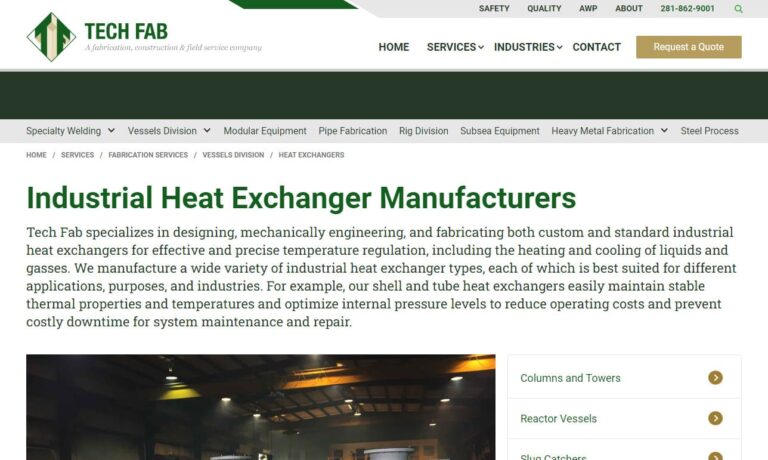
Since 1983, we have been providing quality heat transfer products for a wide variety of applications. We repair, rebuild or manufacture heat exchangers, tube heat exchangers, shell heat exchangers and double-wall heat exchangers. Electronics, hospitals and housing industries depend on us.
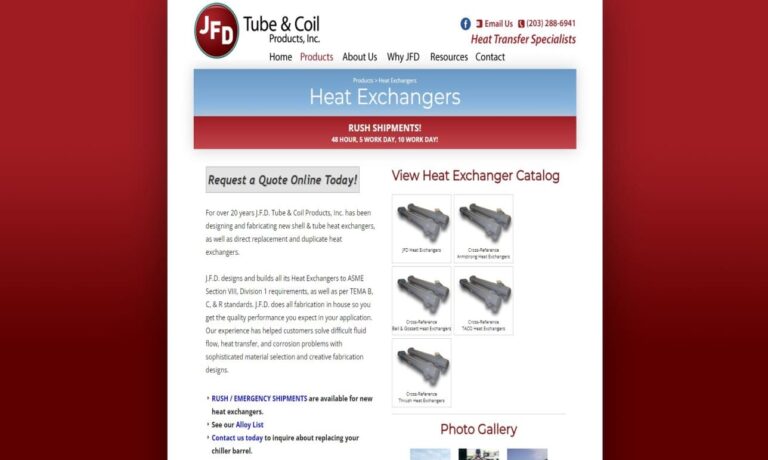
Since 1930 we have been a leader in providing control solutions and process equipment at McRae Engineering. Our product offerings include heat exchangers, agitators, boilers, vacuum pumps, process heaters, dampers, centrifugal blowers, and more. We also provide various repair services for our customers. Our experienced engineers will work with you to ensure all your specifications are met. Our...
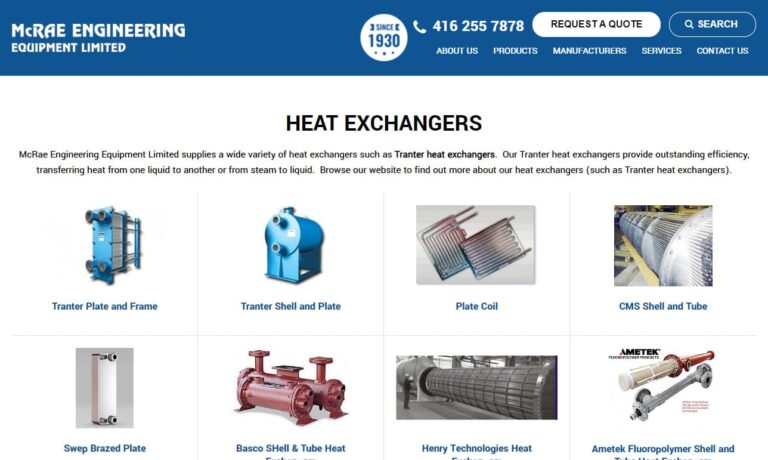
At Lone Star Thermal Engineering, we specialize in providing comprehensive solutions for heat exchangers tailored to meet the diverse needs of our valued clientele. With our expertise in the field of thermal engineering, we have established ourselves as a trusted leader known for our commitment to quality, innovation, and customer satisfaction. Our product portfolio encompasses a wide range of...
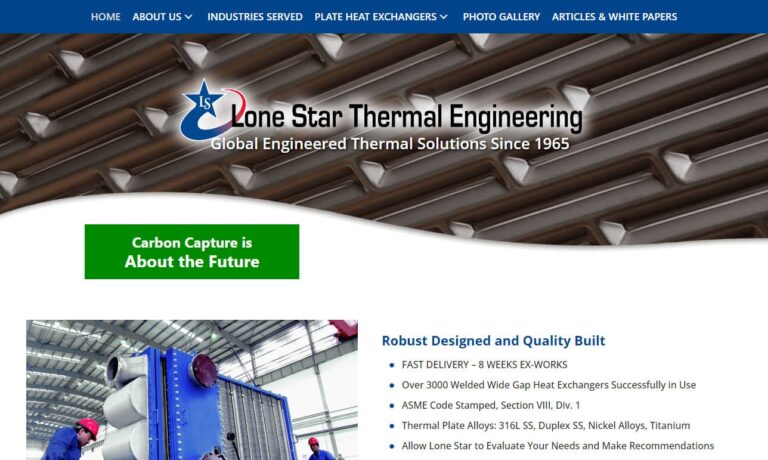
More Heat Exchanger Manufacturers
What are Heat Exchangers?
A heat exchanger serves as a conduit for transferring heat between multiple fluids, playing a crucial role in both heating and cooling processes. This device can keep the liquids apart with a solid barrier to prevent mixing, or allow them to mingle directly. Essential in a variety of settings, heat exchangers are employed in systems ranging from refrigeration and air conditioning to chemical and petrochemical plants. They are also integral in power stations, petroleum refineries, sewage treatment facilities, and natural gas processing plants.
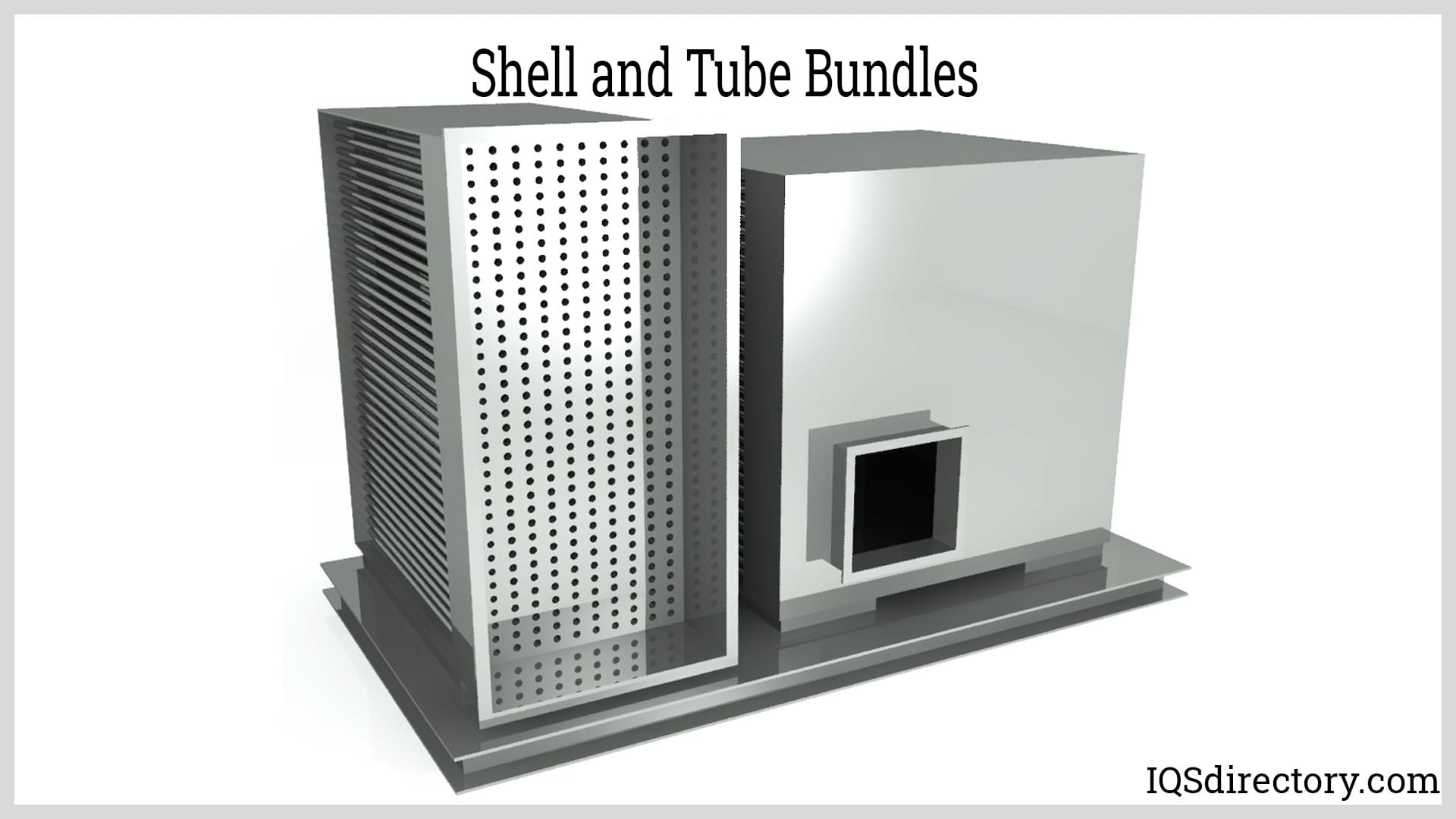
In the world of internal combustion engines, a quintessential example of a heat exchanger is the radiator system. Here, a substance known as engine coolant meanders through the radiator’s twists and turns, while the external air dances around the outside. This elegant ballet not only cools down the coolant but also warms up the air that’s drawn in.
Then there’s the case of heat sinks, those unsung heroes in the realm of electronics and mechanical devices. Functioning as passive heat exchangers, they siphon off the heat produced by these devices and entrust it to either liquid or air coolants, ensuring everything operates at a cool, steady pace.
Heat Exchanger Selection Considerations
Choosing the right heat exchanger is a bit like selecting a perfect suit for a special occasion—it needs to fit your specific needs flawlessly. Initially, delve into the core needs of your application: the nature and volume of fluids involved, the temperature parameters, flow dynamics, and pressure specifics. Also, keep in mind the physical constraints where this system will reside—this will help you tailor the size and design of the heat exchanger accurately.
As you sift through the options—be it the robust shell-and-tube, the compact plate, the versatile finned-tube, or the straightforward double-pipe—consider what each style brings to the table. A shell-and-tube model, for example, might be the powerhouse you need for handling high pressures and temperatures. On the other hand, a plate heat exchanger offers a slimmer, cost-effective solution for lighter, low-viscosity fluids. Each type has its niche, ensuring that your system not only meets but exceeds expectations.
Choosing the right materials for a heat exchanger is essential because it affects how well it can handle different fluids, along with their corrosive qualities and tendencies to cause fouling. It’s also important to focus on the system’s overall energy efficiency, which influences long-term operating expenses. Analyzing factors like pressure drop, heat transfer efficiency, and resistance to fouling is crucial for ensuring the system performs optimally with minimal upkeep.
Additionally, it’s important to consider the operating conditions, environmental factors, and the system’s ability to adapt to future growth or changes. This foresight ensures the chosen heat exchanger will remain effective as demands evolve. Consulting with manufacturers or specialists in heat exchangers can also provide valuable insights, aiding in a well-informed selection process.
In summary, selecting the ideal heat exchanger for a particular application involves a comprehensive evaluation of the system’s needs, including the consideration of space limitations and installation constraints. One must compare various types and materials of heat exchangers, consider energy efficiency, and weigh long-term costs. It’s also crucial to factor in the operating conditions and potential for future expansion. By adopting a holistic approach and consulting with experts, one can choose a heat exchanger that is tailored perfectly to the application’s requirements, ensuring effective and efficient performance.
Types of Heat Exchangers
The different types of heat exchangers include:
Finned Tube Heat Exchangers or Air Cooled Heat Exchangers
Finned tube heat exchangers, air-cooled exchangers, dryers, and coolers operate by channeling a fluid through a network of tubes while circulating air or gas over and around these conduits to lower the fluid’s temperature.
At times, finned tube heat exchangers, dryers, or coolers are nestled within ductwork, while at other instances, they stand fully exposed, with air sweeping over them. These devices owe their effectiveness to their extended surfaces; the fins extend into the air or gas flow, amplifying the heat transfer capacity of the assembly. They are adept at transferring heat between gasses or air and fluids.
Shell and Tube Heat Exchangers
In a shell and tube heat exchanger, a fluid or gas, either warm or cool, flows through a cluster of tubes nestled within a sizable metal casing. Opposing this flow, another fluid or gas—either heating up or cooling down—circulates through the shell surrounding the tubes. It’s within this encasement that the exchange of heat occurs, making these systems ideal for transferring heat between fluids or from a fluid to a gas.
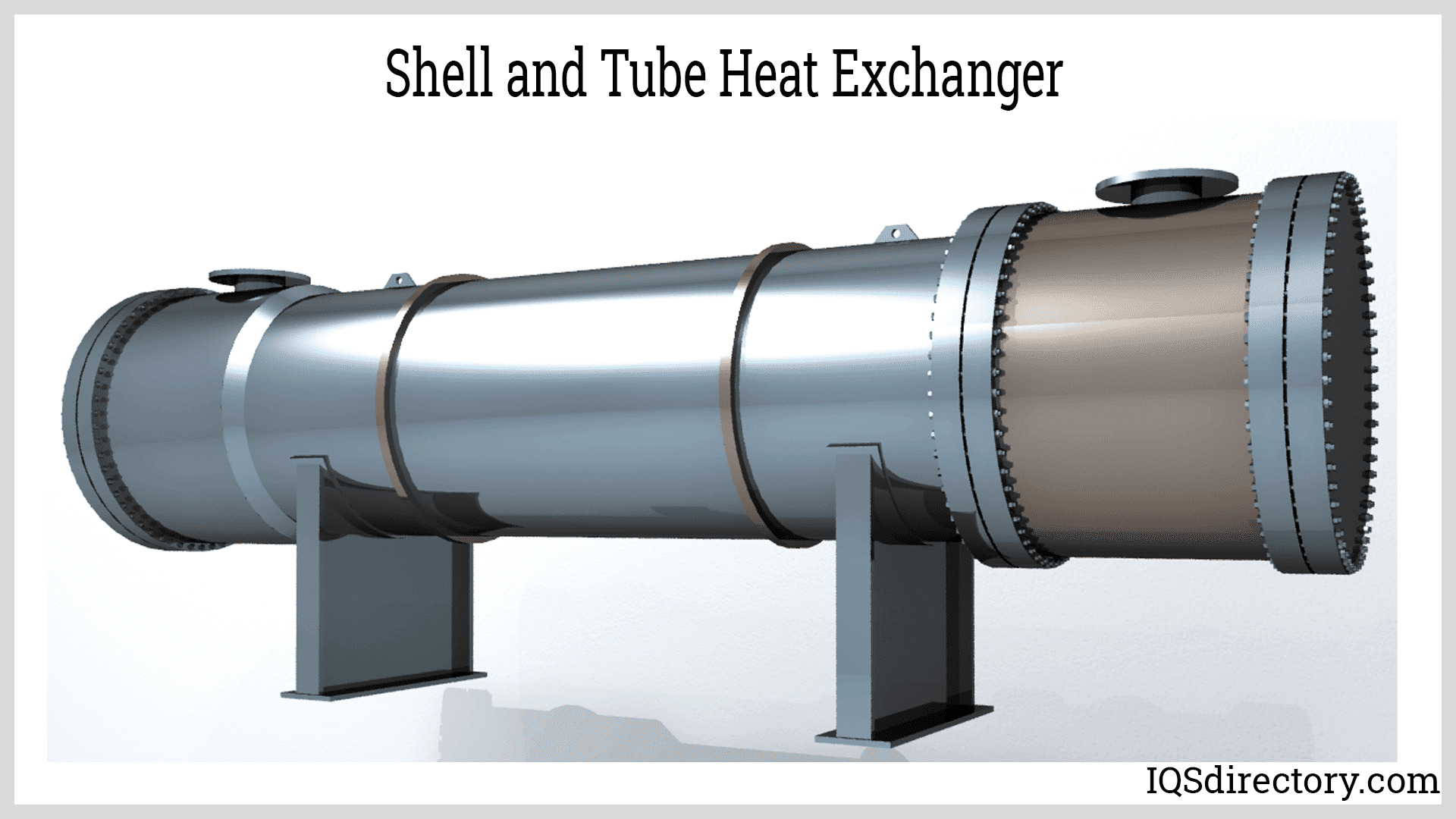
Plate Heat Exchangers or Gasket Plate Heat Exchangers
A plate heat exchanger, also known as a gasket plate heat exchanger, functions by guiding liquids through a series of tightly pressed plates arranged side by side. This design is versatile enough to handle exchanges between fluid and vapor, or between different fluids.
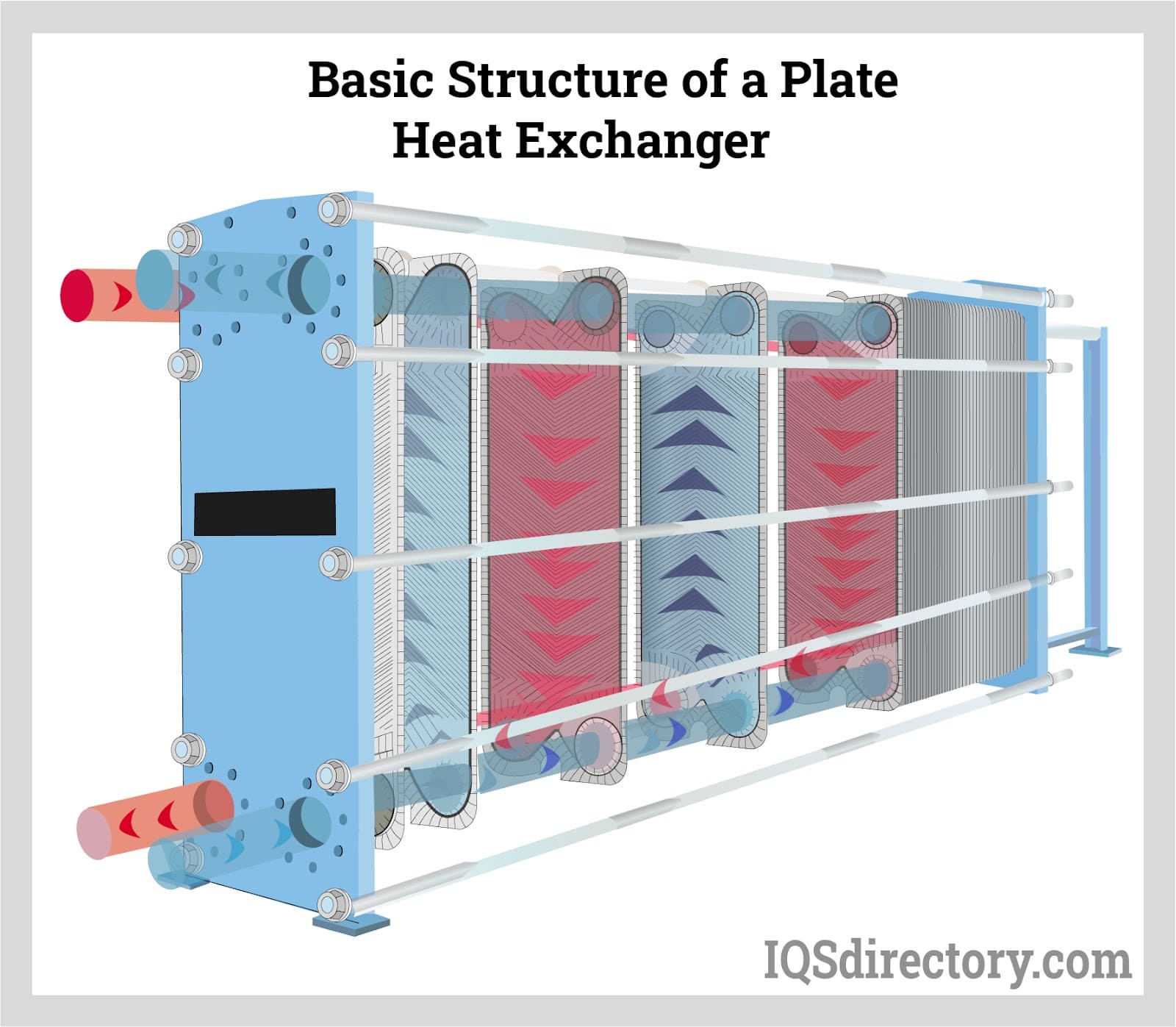
Plate and Shell Heat Exchangers
This design merges the functionality of plate heat exchangers with the mechanisms of shell and tube heat exchangers. At its heart lies a circular plate package, meticulously crafted by shaping, compressing, and welding rounded plates into a fully welded ensemble. The fluid dynamics are managed by nozzles that direct the flow into and out of this compact plate assembly.
The entire plate pack is seamlessly integrated into an outer shell, forging a secondary flow pathway. This plate and shell configuration excels in heat transfer efficiency and can handle high pressures and temperatures. Its compact design minimizes fouling and allows for very close temperature approaches, making it highly effective and reliable.
Adiabatic Wheel Heat Exchangers
These systems employ either a solid medium or a fluid to capture and store heat, which is subsequently conveyed to the opposite side of the heat exchanger for release. Two illustrations include a large wheel with delicate threading that rotates through both cold and hot fluids, and fluid-based heat exchangers.
Plate Fin Heat Exchangers
They employ channels arranged in a “sandwich” style, enhanced with fins, to boost the unit’s efficiency. These designs feature both counter-flow and crossflow arrangements, enriched with various fin styles such as offset, wavy, and straight fins. Typically crafted from aluminum alloys, these components are chosen for their superior heat transfer capabilities.
Dynamic Scraped Surface Heat Exchanger
This is primarily employed for regulating temperatures in processes involving high viscosity outputs, crystallization, evaporation, and applications prone to high fouling. Continuous scraping of surfaces ensures extended periods of operation.
Direct Contact Heat Exchanger
In these types of heat exchangers, heat moves from hot to cold currents across two different phases, without any separating barrier. These systems can be divided into various categories, such as gas-liquid, immiscible fluid-fluid, solid-fluid, and solid-gas exchanges.
Microchannel Heat Exchangers
This device is a multi-pass parallel flow heat exchanger composed of three primary components: outlet and inlet manifolds, multiport tubes, and fins.
Pillow Plate Heat Exchangers
Pillow plate heat exchangers are a staple in the dairy industry, prominently used to cool milk within vast direct-expansion stainless steel tanks. These heat exchangers can be seamlessly integrated to cover almost the entire surface area of a bulk tank.
Limitations and Overcoming Them
Heat exchangers come with their fair share of challenges despite their widespread advantages. Fouling stands out as a primary concern, where deposits building up on the surfaces over time diminish heat transfer efficiency and ramp up energy use. Corrosion also poses a significant risk, especially when handling aggressive fluids, potentially degrading materials and shortening the lifespan of the heat exchanger. Additionally, pressure drop becomes a critical issue in scenarios with high flow rates, necessitating more pumping power and thereby increasing operational costs. Missteps in choosing the appropriate type or size of a heat exchanger can lead to suboptimal heat transfer and decreased system efficiency. Lastly, operational headaches may arise when handling fluids prone to solidify or freeze, potentially damaging the heat exchanger.
To push past existing boundaries, heat exchanger manufacturers are forging ahead with cutting-edge designs and materials. They’re embracing advanced, corrosion-resistant alloys and specialized coatings to boost the exchangers’ resistance to fouling and corrosion. This not only prolongs their operational life but also slashes the need for frequent upkeep. In their creative pursuits, manufacturers are also sculpting innovative exchanger configurations and refining surface designs to curb fouling and lessen pressure drops, all while enhancing heat transfer efficiency. Additionally, they are harnessing the power of computational fluid dynamics (CFD) and other simulation technologies to decode and anticipate fluid flow patterns. This allows them to tailor heat exchangers that are not only more effective but also finely tuned to meet the specific demands of their applications.
To tackle the issue of freezing or solidification in heat exchangers, manufacturers are integrating innovative solutions such as bypass lines, preheating systems, and heat tracing. These additions help keep fluids flowing freely and prevent them from freezing, ensuring uninterrupted operation. Additionally, some manufacturers are delving into the use of phase-change materials in specific heat exchanger models to overcome these challenges more efficiently.
Additionally, modern developments in heat exchanger monitoring and control technologies facilitate continuous performance observation. This capability helps identify issues like fouling or corrosion at an early stage. Adopting this proactive stance not only allows for prompt maintenance but also minimizes downtime, thus boosting the reliability and efficiency of heat exchanger systems.
Manufacturers are channeling resources into research and development to craft bespoke heat exchangers tailored to the unique demands of specific applications. By customizing the design, materials, and dimensions of the heat exchangers to fit the distinct needs of each application, they aim to maximize heat transfer efficiency and overcome any potential constraints.
In summary, heat exchangers encounter challenges such as fouling, corrosion, pressure variations, selecting the right materials, and handling fluids that may freeze. To tackle these issues, manufacturers are harnessing advanced materials, crafting innovative designs, employing simulation tools, utilizing phase-change materials, and enhancing monitoring and control technologies. In their quest to refine heat exchanger technology, manufacturers are dedicated to breaking through these barriers, aiming to offer solutions that are not only more efficient and reliable but also tailored to specific applications.
Benefits of Heat Exchangers
Heat exchangers serve as vital cogs in the machinery of heat transfer systems, spanning industrial, commercial, and residential settings. Their chief role is to masterfully orchestrate the flow of heat between two fluids, whether to warm them up or cool them down. This efficient transfer of thermal energy not only conserves energy but also slashes the system’s overall power usage.
Moreover, heat exchangers elevate safety standards by keeping the two fluids apart, eliminating the chance of direct contact. This is especially critical when handling hazardous or toxic substances. By preventing any crossover, these devices drastically lower contamination risks and bolster safety in the workplace.
Heat exchangers not only optimize energy use but also pave the way for substantial cost savings. Their ability to transfer heat efficiently cuts down on utility bills, proving economically beneficial over time. Furthermore, when these systems recover and repurpose waste heat, they slash operational expenses and lessen environmental strain, enhancing both economic and ecological efficiency.
They are champions of environmental sustainability, cutting down on energy use and greenhouse gas emissions. This makes them a key player in the eco-conscious strategies embraced by various industries and governments across the globe.
Additionally, when chosen and used correctly, heat exchangers are remarkably durable and demand little upkeep. Their robustness leads to greater system reliability and less downtime, enabling consistent and smooth operation.
In summary, heat exchangers shine as marvels of engineering, offering a plethora of benefits. They champion efficient heat transfer, bolster safety, maximize space usage, maintain perfect operating temperatures, and promise cost-effectiveness. Moreover, they’re beacons of environmental sustainability and steadfast reliability. These sterling qualities render heat exchangers indispensable in numerous settings, elevating both performance and system efficiency across the board.
Applications of Heat Exchangers
As a result of the numerous benefits, heat exchangers find application in an extensive range of industries, such as:
Refrigeration
Heat exchangers play a vital role in the frosty heart of refrigeration systems, shuttling heat away to sustain the chill that keeps refrigerators and air conditioning units cool.
Space Heating
Heat exchangers are crucial components in space heating systems, transferring warmth from hot water or steam to the air inside buildings, ensuring cozy and inviting environments.
Air Conditioning
In air conditioning systems, heat exchangers cool and dehumidify the air by transferring heat between the indoor and outdoor environments.
Chemical Plants
In chemical processes, controlling temperature and recovering heat are crucial tasks often accomplished through heat transfer. To manage this efficiently, heat exchangers play a vital role in maintaining optimal thermal conditions.
Petrochemical Plants
In the world of petrochemical industries, heat exchangers play a crucial role. They are used for a range of tasks such as preheating feedstock, cooling down process streams, and reclaiming heat from hot gasses.
Power Stations
Heat exchangers play a crucial role in power generation, whether they are cooling steam in thermal power plants or transferring heat within nuclear power plants.
Petroleum Refineries
Refineries employ heat exchangers to transform crude oil, separating its hydrocarbons and cooling different streams throughout the refining process.
Sewage Treatment
In sewage treatment plants, heat exchangers play a vital role by reclaiming heat from wastewater streams or regulating the temperature for various biological processes.
Cryogenics
In cryogenic applications, heat exchangers play a crucial role in transforming gasses such as oxygen, nitrogen, and natural gas into their liquid forms for efficient storage and transport.
Automotive
Heat exchangers play a crucial role in vehicles, serving to cool the engine through the radiator and to manage air conditioning via the condenser.
Marine
Heat exchangers in marine vessels serve vital roles, such as cooling engines, managing hydraulic systems, and desalinating seawater.
Brewing
In brewing, heat exchangers are essential for managing fermentation temperatures and cooling the wort effectively.
Natural Gas Processing
Heat exchangers play a crucial role in natural gas processing plants by cooling and condensing the gas into its liquid form, known as liquefied natural gas (LNG), making it easier to store and transport.
In all these scenarios, the selection of heat exchangers hinges on factors like fluid characteristics, desired temperature ranges, pressure requirements, and the overall system architecture. Their adaptability and efficiency render heat exchangers essential across numerous industries, facilitating economical heat transfer and promoting energy conservation.
Choosing the Correct Heat Exchanger Manufacturer
To achieve the best results when purchasing a heat exchanger, it’s crucial to compare several manufacturers using our comprehensive directory. Each listed manufacturer has a detailed business profile showcasing their expertise and capabilities, along with a contact form for direct inquiries or quote requests. Utilize our patented website previewer to swiftly understand each company’s specialties. Finally, our streamlined RFQ form allows you to reach out to multiple manufacturers with a single request, making the process efficient and hassle-free.

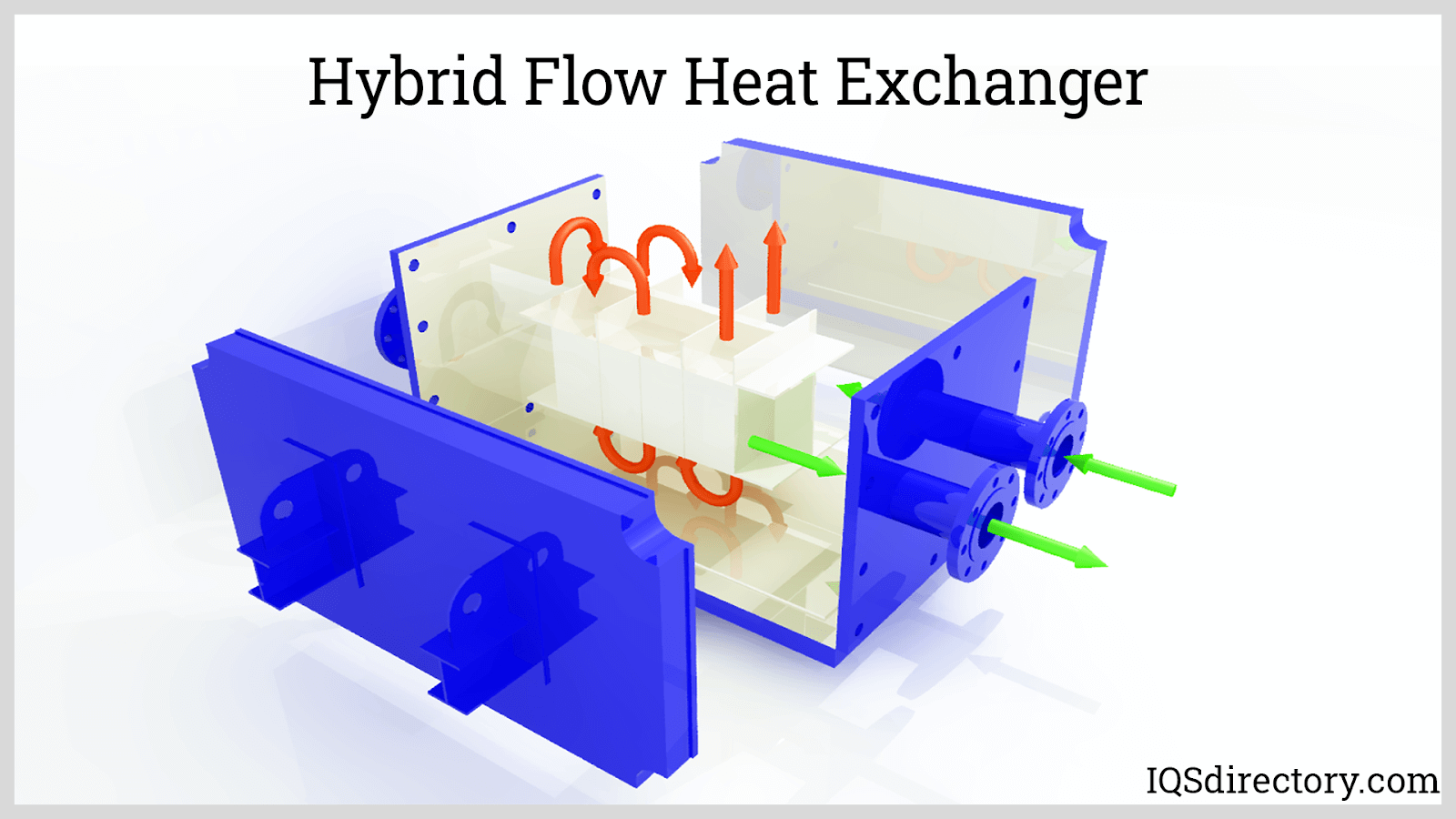
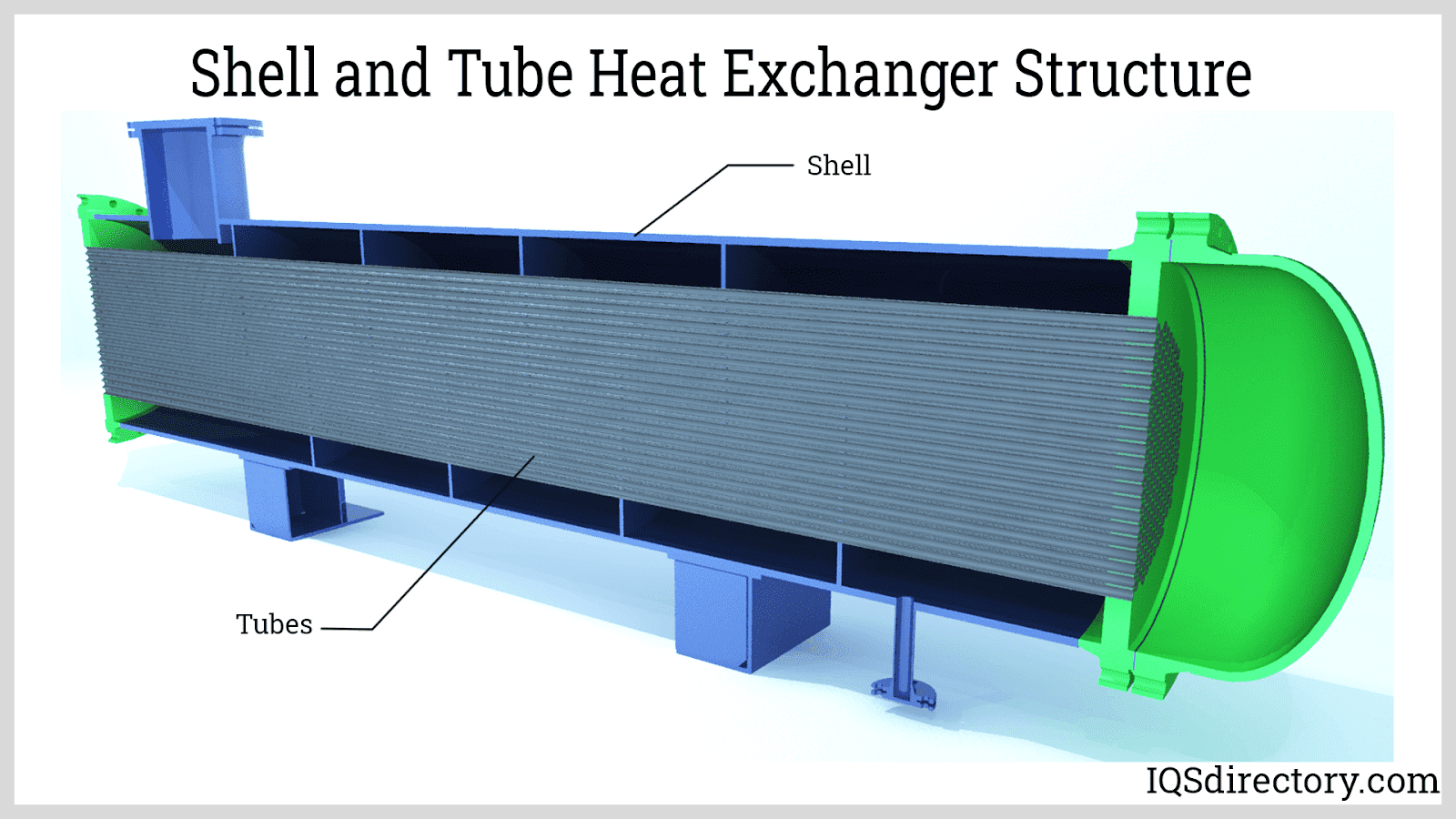

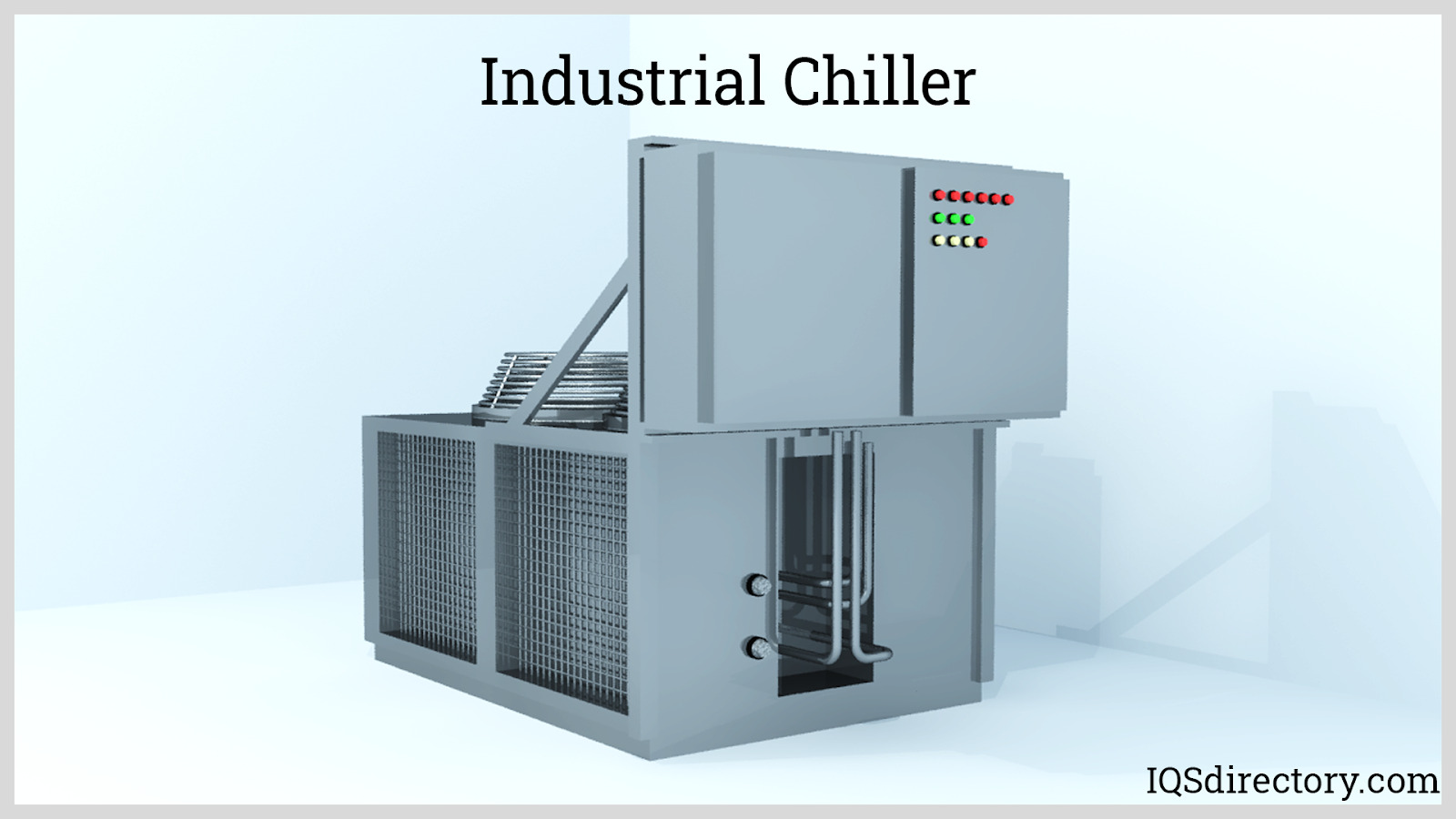
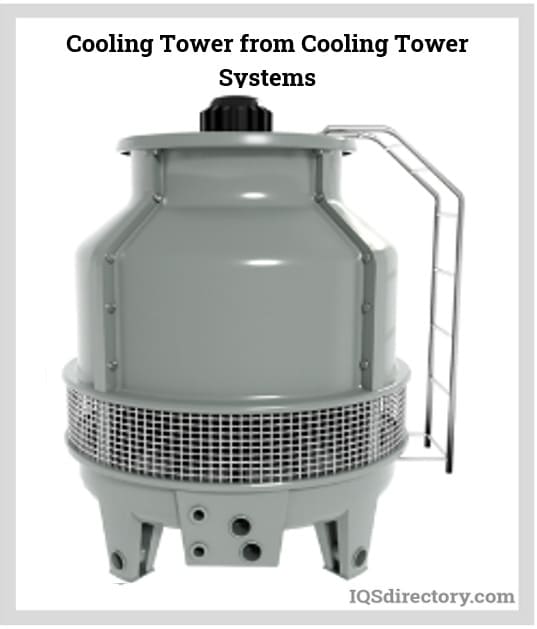
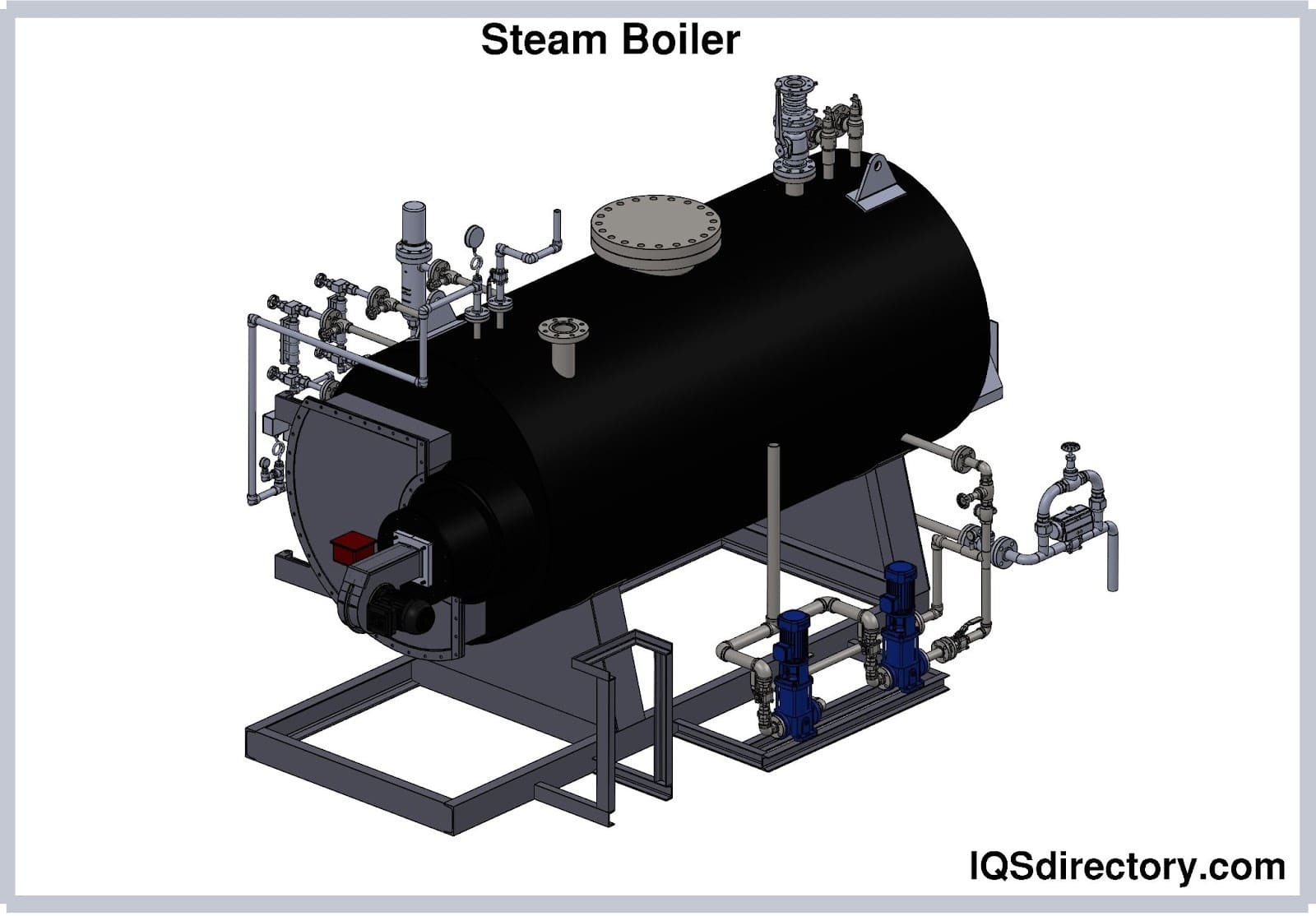
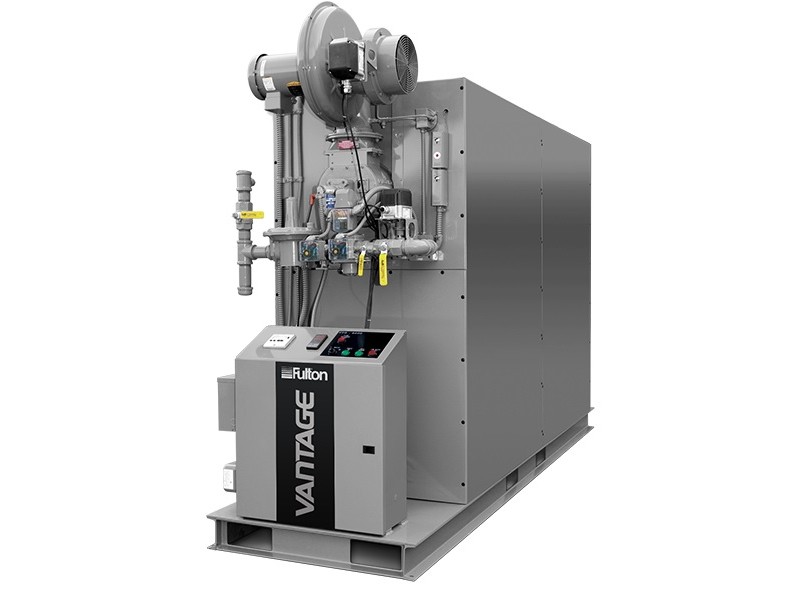 Boilers
Boilers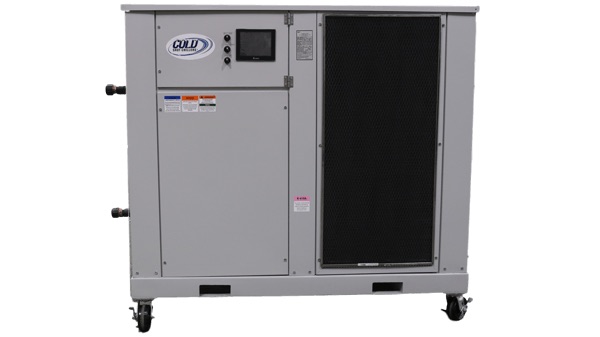 Chillers
Chillers Cooling Towers
Cooling Towers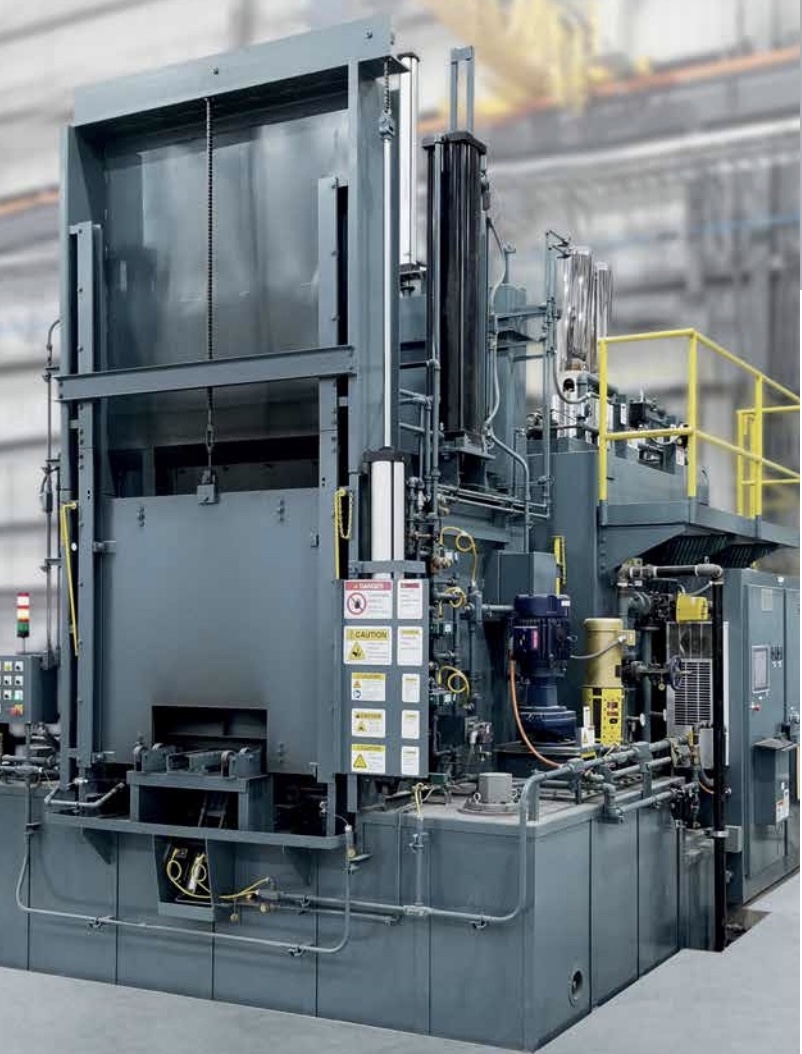 Furnaces
Furnaces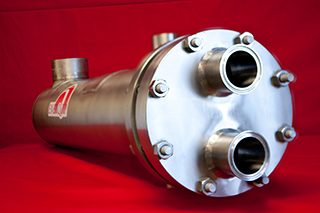 Heat Exchangers
Heat Exchangers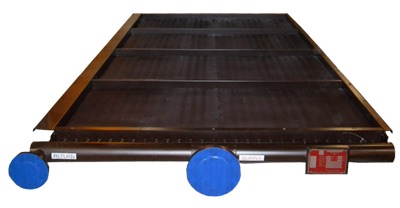 Heat Transfer Equipment
Heat Transfer Equipment Castings & Forgings
Castings & Forgings Bulk Material Handling
Bulk Material Handling Electrical & Electronic Components
Electrical & Electronic Components Flow Instrumentation
Flow Instrumentation Hardware
Hardware Material Handling Equipment
Material Handling Equipment Metal Cutting Services
Metal Cutting Services Metal Forming Services
Metal Forming Services Metal Suppliers
Metal Suppliers Motion Control Products
Motion Control Products Plant & Facility Equipment
Plant & Facility Equipment Plant & Facility Supplies
Plant & Facility Supplies Plastic Molding Processes
Plastic Molding Processes Pumps & Valves
Pumps & Valves Recycling Equipment
Recycling Equipment Rubber Products & Services
Rubber Products & Services